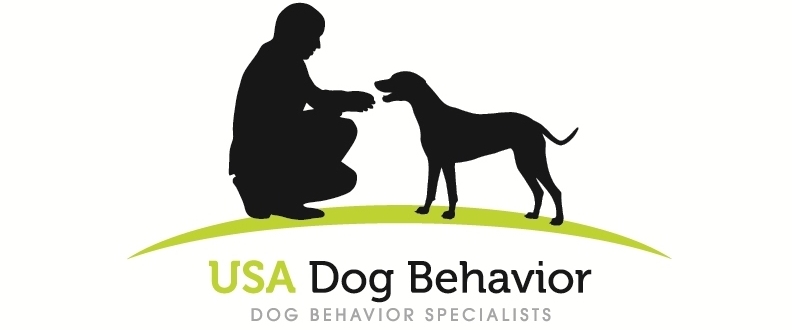The Hidden Risks of Board & Train Dog Training Schools for Aggression Cases
Using a Shock Collar to Treat Aggression
For the audio version of these blog posts, tune into the USA Dog Behavior Podcast.
When a dog shows aggression, it’s natural to want the problem solved quickly. Many owners, hoping for a fresh start, turn to “board and train” programs—where a dog lives at a training facility for days or weeks, receiving daily sessions with a trainer.
It sounds ideal: the trainer “fixes” the problem while you go about life, and you get your dog back transformed. Unfortunately, for aggression cases, the reality can be far more complicated—and in some cases, harmful.
1. Suppressing the Symptom, Ignoring the Cause
Aggression is rarely the real problem—it’s a symptom. In most cases, it’s rooted in fear, insecurity, or a learned history that certain situations predict something unpleasant.
When a trainer uses punishment to make the growling, barking, or lunging stop, they may succeed in the short term. But the fear doesn’t disappear—it just goes underground. Your dog learns:
“I’m still scared, but I’d better not show it.”
This is dangerous because fear-driven aggression that’s been suppressed can reappear later without warning—and often with greater intensity.
Think of fear like steam in a pressure cooker. The growl, bark, or snap is the steam vent—it’s a warning sign. Punishment closes the vent, but the steam keeps building. When that pressure has nowhere to go, you don’t get less aggression—you get a sudden, explosive outburst. The technical term for this behavior is “masking.”
2. Masking vs. True Behavior Change
One of the most deceptive things about some board-and-train programs is how well the dog appears to behave at pickup. The dog may sit politely, ignore other dogs, or walk calmly—at least in the training environment.
But without addressing the underlying emotional state, this “calm” is often just a freeze response: the dog is shut down, not comfortable. Once back in their real-life triggers at home, the aggression often returns. Owners are left feeling confused and betrayed—thinking, “But he was so good for the trainer!”
3. Environmental Stress from Being Away from Home
For many dogs—especially those already prone to fear—being taken away from familiar surroundings, family members, and routines creates an immediate spike in stress hormones.
High stress can:
Make fear-based behaviors more likely.
Reduce the dog’s ability to learn new associations.
Create additional behavioral fallout, like new anxieties or compulsive behaviors.
4. Lack of Owner Involvement
Aggression cases require handler skill, consistent management, and trust-building between the dog and their owner. Sending a dog away for training removes the person the dog actually needs to trust from the process.
Even if the trainer does use positive, evidence-based methods, the progress often doesn’t “transfer” well because the dog hasn’t practiced those new coping skills with you in real-life situations.
5. Possible Safety & Welfare Concerns
Unfortunately, not all facilities are transparent about their methods. Many owners don’t know exactly what happens behind closed doors. If the trainer uses harsh corrections, shock collars, or other aversive tools, the damage to trust and welfare can be profound and lasting.
What’s the Better Approach?
If your dog is showing aggression, here are key steps for a more effective, humane path forward:
Work in the dog’s normal environment where they feel safest, and start with low-intensity versions of their triggers.
Focus on emotion first—use desensitization and counterconditioning to change how your dog feels about their triggers, not just how they act.
Stay actively involved—you are your dog’s long-term trainer. Your presence, timing, and relationship are irreplaceable.
Vet your trainer or dog behaviorist carefully—ask about credentials, transparency, and how they handle fear or aggression.
Ensure that no form of punishment is used in the training. Punishing the aggression only makes the underlying root causes of the aggression worse in the long haul.
Final Thought
Board and train programs for aggressive dogs can seem like the fast lane to a better-behaved dog. But in aggression cases, it often trades long-term stability for a short-term illusion. The safest, most lasting results come from training that addresses fear, builds trust, and includes you—the person your dog needs most—every step of the way.
For the audio version of these blog posts, tune into the USA Dog Behavior Podcast.
© 2025 Scott Sheaffer. All rights reserved.

